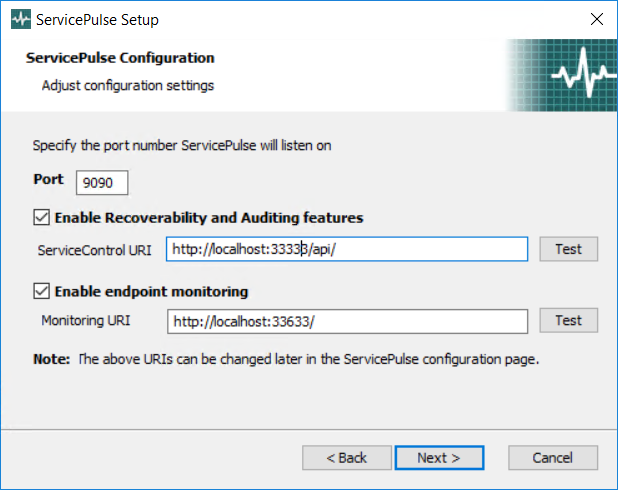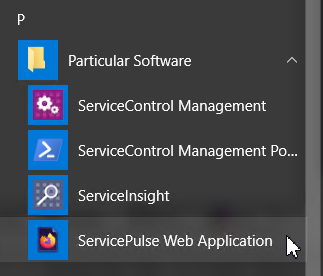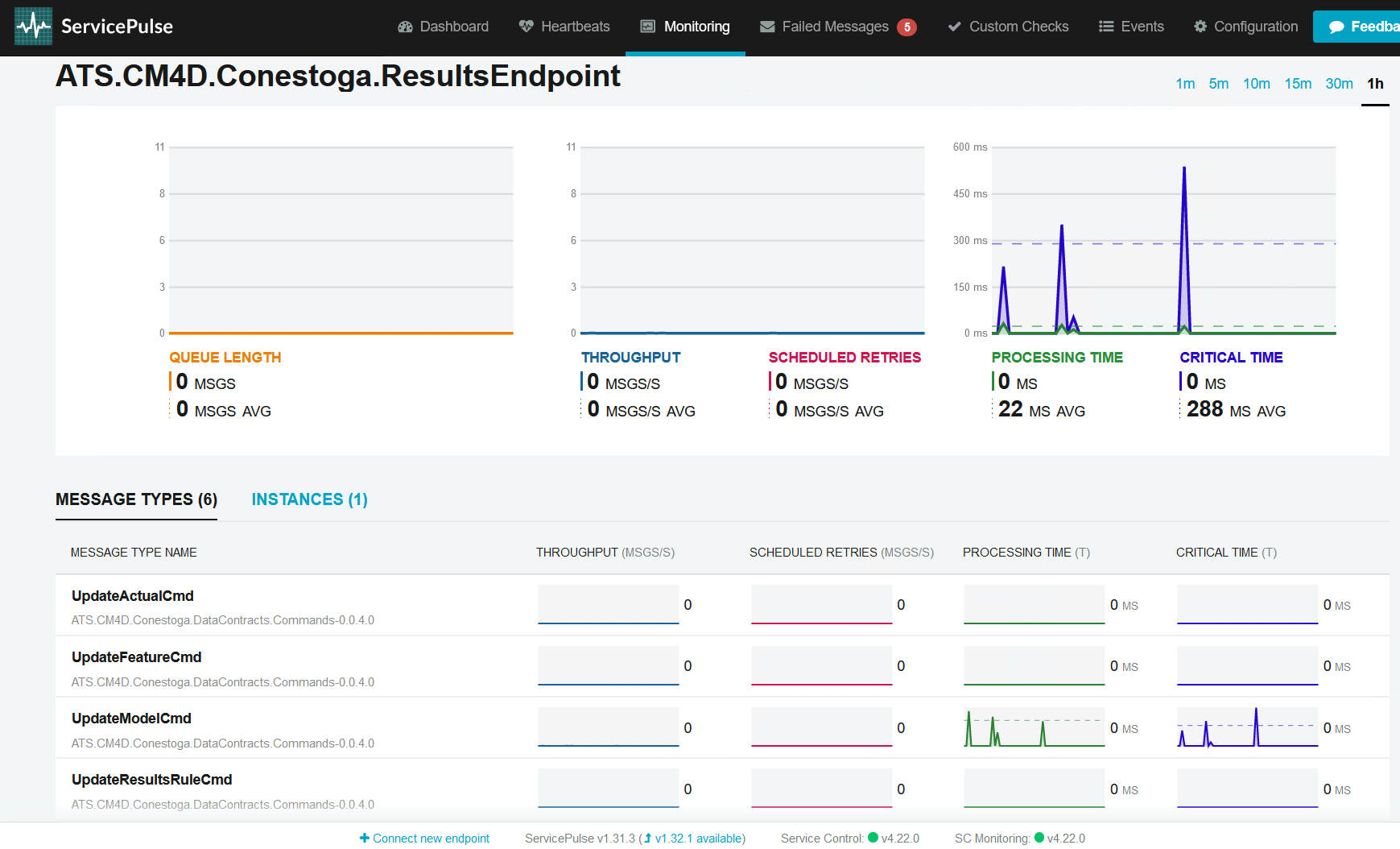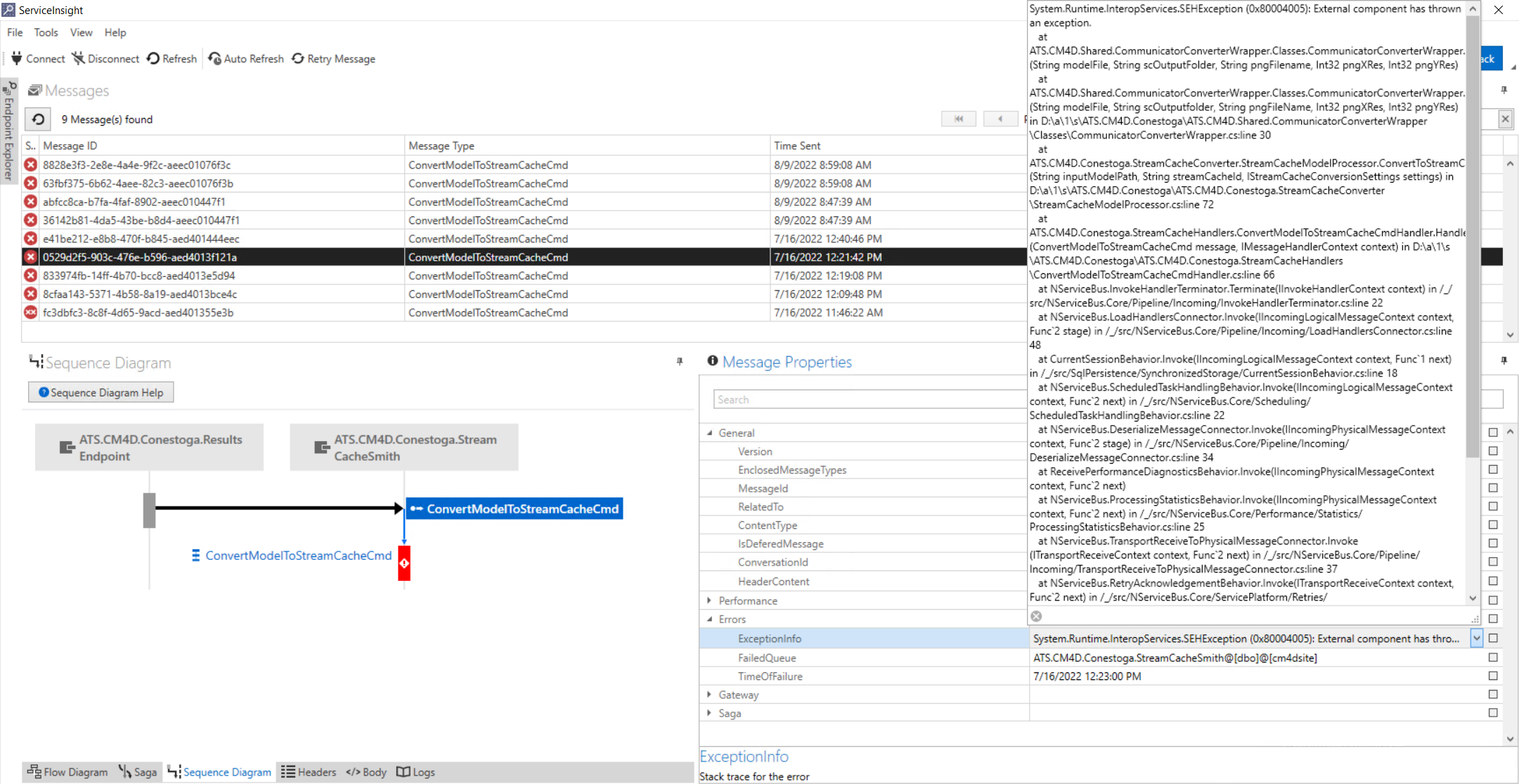The following installation instructions are only an example of a generic configuration of the ServiceControl tools for use with CM4D Results Services. Your system configuration may require different transport options or settings. Match the options with those selected during the installation of the Results services.
Transport OptionsTransport Options
The NServiceBus transport is the way the messages are sent from one node to another. The system can be a distributed deployment, such as a local CM4D Site database and a cloud-based Results database. There are multiple transport options available. The transport is configured by selecting the Transport option during the Results service installation. The Results services must be connected to the same database and have the same transport type as the ServiceControl configuration you are using.
- Site/SQL Database - The SQL transport uses database tables to implement the message queues that connect the different services. This service is simple to configure as it can use the SQL Server that is used for CM4D databases. However, it does not provide the same throughput and scalability as other transport options.
- RabbitMQ - RabbitMQ is a high-performance open-source message broker with wide industry usage. RabbitMQ can be installed on-premises on a server, as a container or used as a service at service providers like CloudAQMP. The free plan is sufficient to test this transport. A RabbitMQ connection string requires a host, username, password and a virtual host. RabbitMQ has a message size limit of 2GB.
- Azure Storage Queue - Azure storage queues are a transport option for cloud-based or hybrid deployments. This option requires an Azure Storage Account. The connection string can be copied from the Azure storage account access key page. Azure has a message size limit of 64KB.
Information about messages might need to be stored to ensure transactional consistency of long-running transactions. The persistency configuration defines where the data is stored. It is recommended to store it in the CM4D Site database, but another database can be configured if necessary. Additional persistency options will be available in future releases.
Transport Queues/Subscription TablesTransport Queues/Subscription Tables
The Transport Queues created by ServiceControl are where the Results services store monitoring information for ServiceControl. In ServiceControl Manager, these queues are identified by the name of each ServiceControl instance. Please note that some transport types (e.g., Azure Storage Queues) may have label formatting restrictions.
Install ServiceControl
Download the ServiceControl applications you want to use from Particular Software. Install the ServiceControl applications. The installation instructions for the NServiceBus applications can be found on the Particular Software website.
Configure ServiceControl
Once the ServiceControl installations are complete, you need to create at least two new instances:
- Monitoring Instance
- ServiceControl Instance
Create a New Monitoring Instance
- Click New.
- Click Add Monitoring Instance.

- Enter a Name for the instance (e.g. 'Particular.Monitoring').
Queues for the Transport option Azure Storage Queue cannot use labels that include capital letters or the decimal/period (.) symbol. For example, replace the default 'Particular.Monitoring' with 'particular-monitoring'. Refer the Microsoft documentation for technical details on Azure Storage Queue Names.
- Enter a Description.
- Select User Account and enter the same user credentials as used for the CM4D Services (e.g., cm4dservice).

- Leave the Host set to 'localhost' unless a change is required.
- Enter the port number.
- Open the Transport menu and select the method selected during the CM4D Results Services installation. By default, this is SQL Server.
- In the Connection string, enter the full string for connecting to your CM4D Site database, according to the type of Authentication that grants access to CM4D databases.
- Windows Authentication [Data Source=cm4dserver25\mssqlserver01;Initial Catalog=25SITE;Integrated Security=True;TrustServerCertificate=True]
- Data Source - Enter the fully qualified server name of the SQL Server database host machine.
- Initial Catalog - Enter the name of the CM4D Site database.
- Integrated Security - Enter 'True' for Windows Authentication.
- SQL Authentication [Data Source=cm4dserver25\mssqlserver01;Initial Catalog=25SITE;User id=sqluser;Password=pass1234;TrustServerCertificate=True]
- Data Source - Enter the fully qualified server name of the SQL Server database host machine.
- Initial Catalog - Enter the name of the CM4D Site database.
- User ID - Enter the username for the SQL Authentication used to access the database.
- Password - Enter the password for the SQL User account.
- Windows Authentication [Data Source=cm4dserver25\mssqlserver01;Initial Catalog=25SITE;Integrated Security=True;TrustServerCertificate=True]
- Click Add.
Once you have the Connection String defined, keep a copy of the string for use in the next section.
Add New ServiceControl Instance
- Click New.
- Click Add ServiceControl and Audit Instances.

- Enter a Name for the Windows service (e.g. 'Particular.ServiceControl').
- Open the Transport menu and select the method selected during the CM4D Results Services installation. By default, this is SQL Server.
- In the Connection string, enter the full string for connecting to your CM4D Site database, according to the type of Authentication that grants access to CM4D databases.In the Connection string field, or paste the connection string from the ServiceControl instance.
- Expand ServiceControl and go to the General section.
- Select User.
- Enter the same user credentials as used for the CM4D Services (e.g., cm4dservice).
- Leave the default settings for the remaining options.

- Expand ServiceControl Audit and go to the General section.
- Select User.
- Enter the same user credentials as used for the CM4D Services (e.g., cm4dservice).
- Leave the default settings for the remaining options.
- Click Add.
Once the monitoring and service control instances are set up, check that the Particular services are running.

Run ServicePulse
The ServicePulse application is accessed via a shortcut provided in the Windows Start menu ![]()
![]() or manually enter the web server and the port (default: localhost:9090) used during the ServicePulse installation
or manually enter the web server and the port (default: localhost:9090) used during the ServicePulse installation ![]()
![]() .
.




Run ServiceInsight (Optional)
Open the ServiceInsight application and connect or configure as needed.
